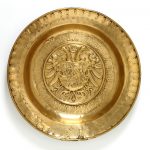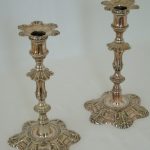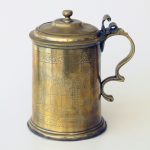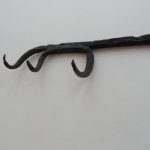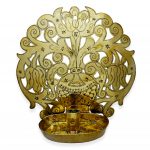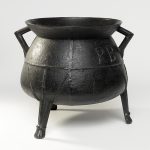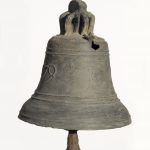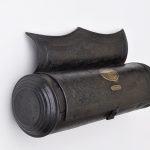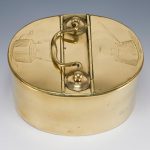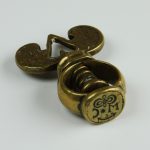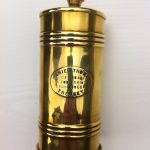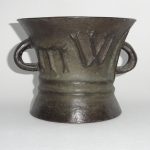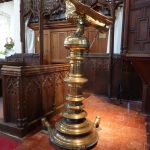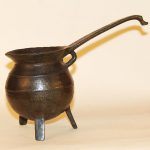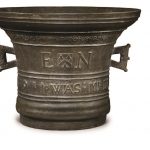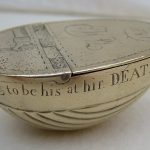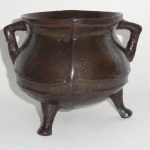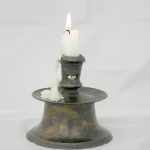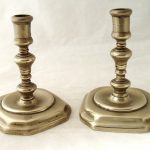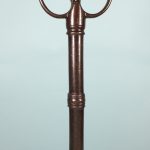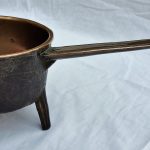The Dudley Box
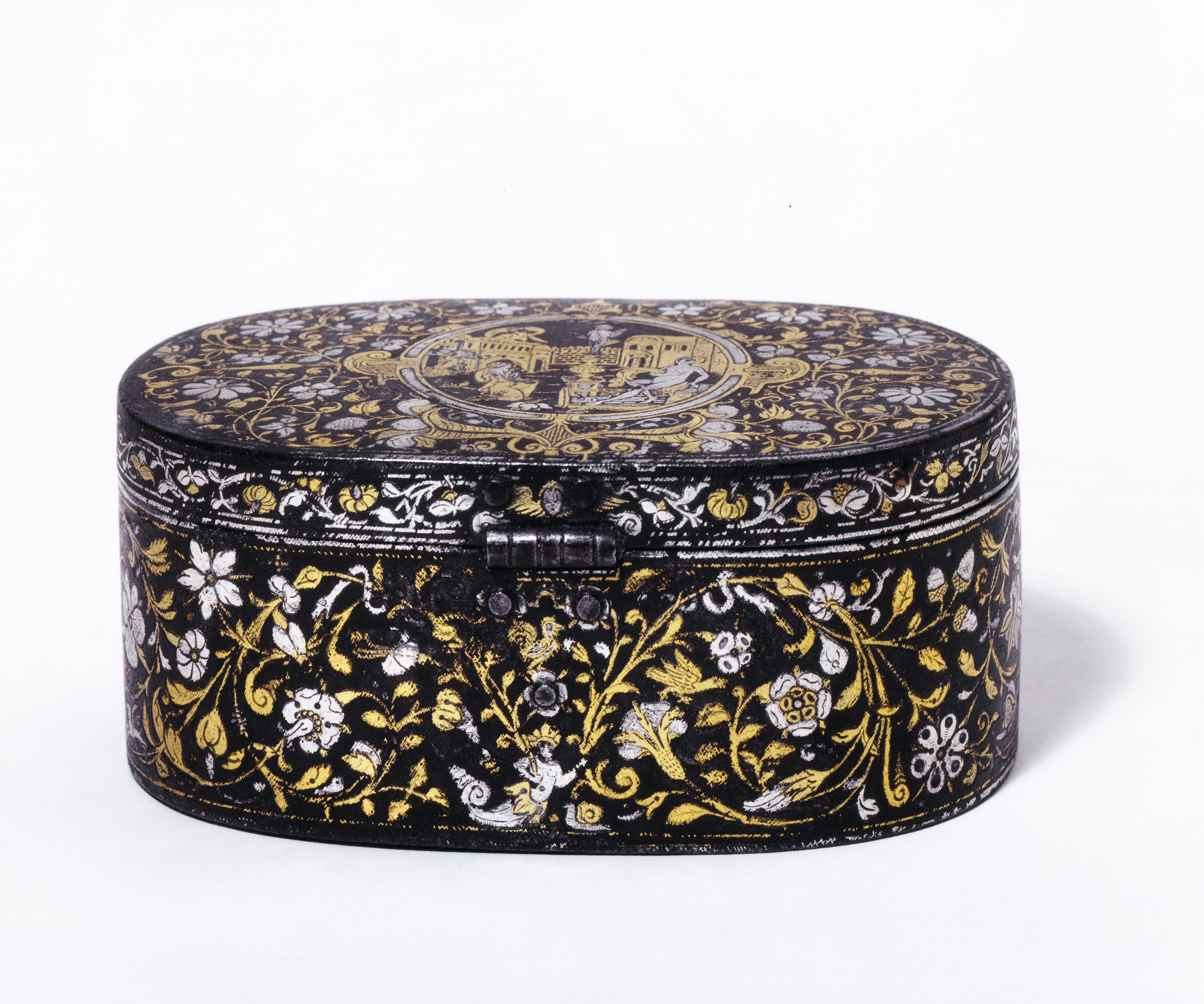
Explanation:
Inside the lid of this box is the bear and staff device of Robert Dudley (about 1532-1588), Earl of Leicester and favourite of Elizabeth I. It is dated 1579 and the presence of Dudley’s device suggests that it was made for him. Boxes like this were usually made to contain sweetmeats, which were often exchanged as gifts at New Year between Elizabeth and her courtiers.
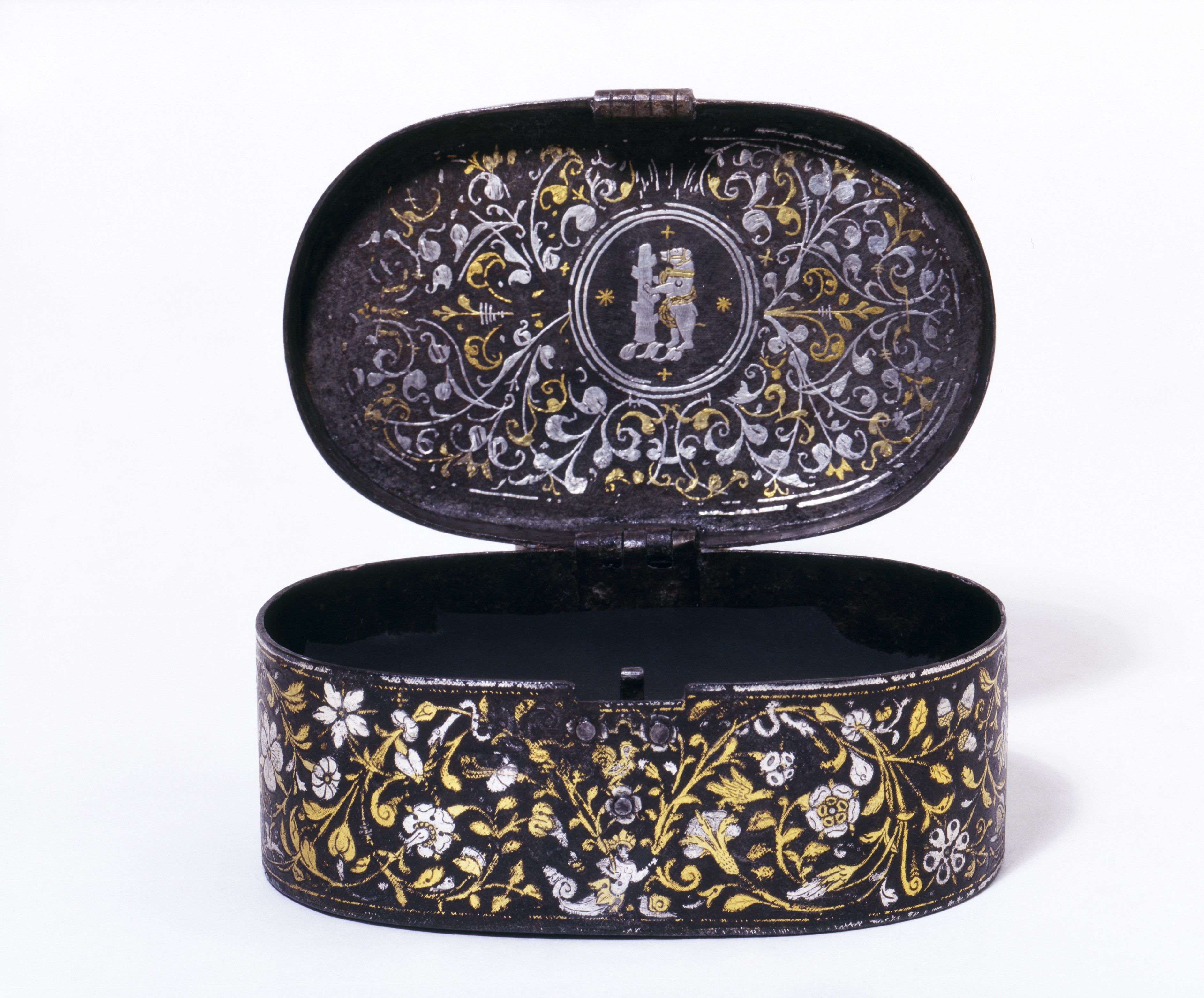
The box is made of iron and intricately decorated by a technique known as damascening, whereby gold and silver wire is inlaid or hammered into the surface of a base-metal object. The iron was darkened to a blue or black colour, using heat or chemicals, to contrast with the gold and silver ornament.
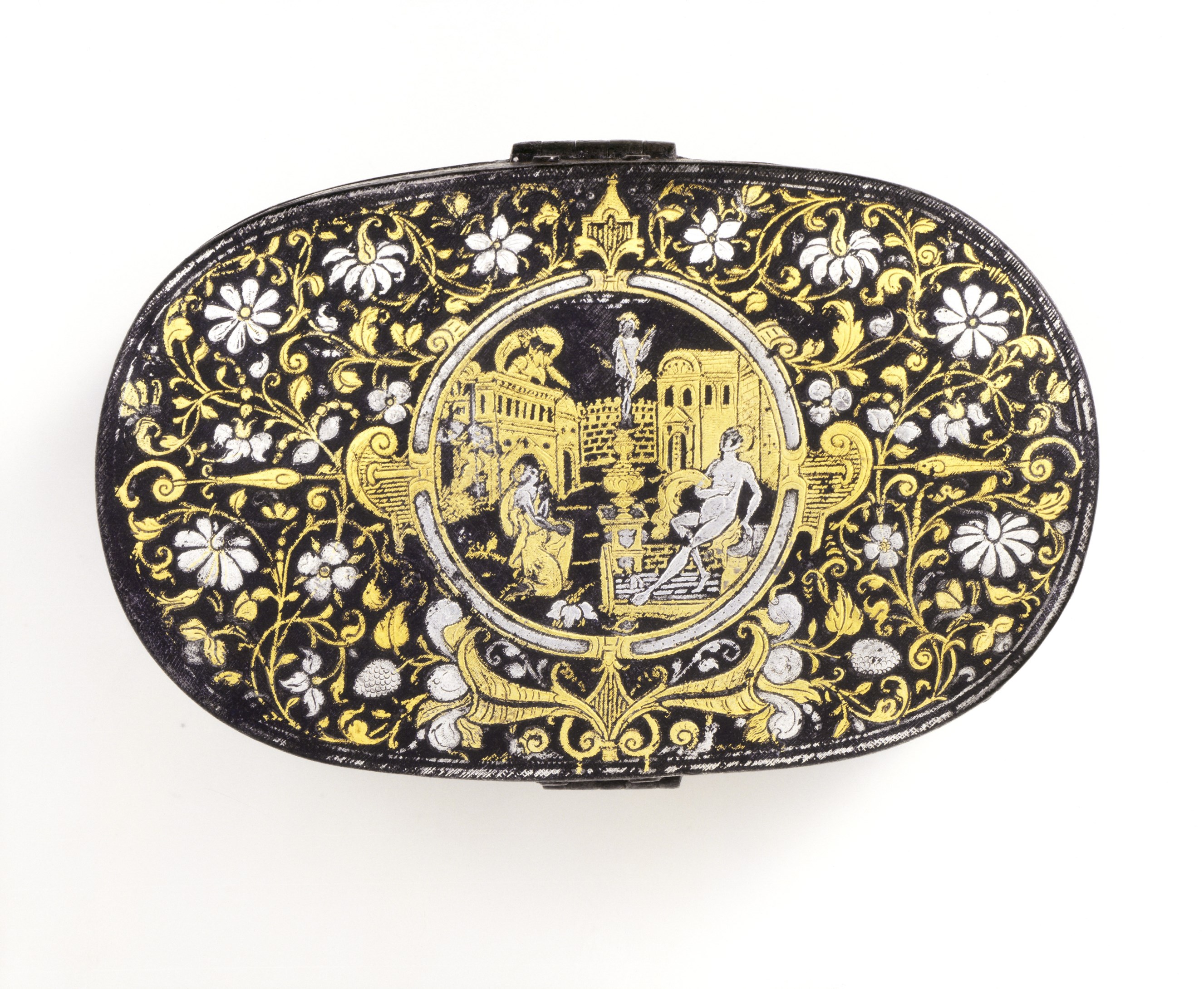
Damascening originated in Islamic areas east of Europe such as Syria, Persia, Egypt and Turkey. Venice had strong trade links with these areas and the movement of imported goods through that city inspired the craftsmen of northern Italy and beyond to adapt the technique for a range of items exported throughout Europe.
In England ‘damaskers’ were employed at Henry VIII’s court, largely to decorate swords and caskets. The Dudley box, with its connection to the Elizabethan court, shows that this technique, applied to a non -precious metal, served the wealthiest level of 16th century society.
References:
- Patterson, Angus, Fashion and Armour in Renaissance Europe: Proud Lookes and Brave Attire, V&A Publishing, London, 2009, ISBN 9781851775811, p. 97, ill.
- Link to V&A Search the Collections database entry: http://collections.vam.ac.uk/item/O78628/the-dudley-box-box-unknown

